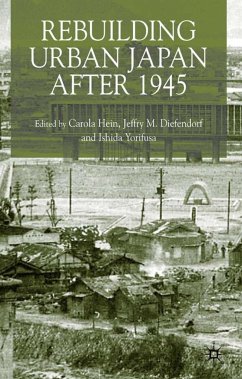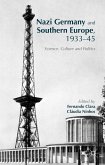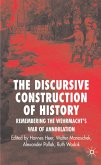This is the first book in English to examine the reconstruction of Japan's bombed cities after World War II, and it is a must-read not only for Japan specialists but also for those interested in urban history and planing anywhere. Five case studies (of Tokyo, Hiroshima, Osaka, Okinawa and Nagaoka) are framed by broader essays on the evolution of Japanese planning and architecture, Japan's urban policies in Manchuria and comparisons between Japanese and European reconstruction.
'This book is a must for researchers and practitioners of urban planning, planning history and the urban history of Japan.' - Shun'ichi Watanabe, Tokyo Science University
'Here is a study grand in its range and significant in its relevance...which we can all learn from.' - Robert Venturi, Pritzker Architecture Prize Winner, 1991
'Long opaque to students of Twentieth-century architecture and planning in the West, the history of the reconstruction of Japanese cities after World War II is detailed for the first time in this authoritative collection of essays edited by Carola Hein, Jeffry Diefendorf, and Ishida Yorifusa. Eleven case studies and thematic overviews by Japanese and international scholars elaborate the political, economic, social, and cultural contexts of rebuilding at a key moment in Japan's modern evolution. This volume fills a significant gap in scholarship and sheds light on both the complexities of regenerating damaged cities and the singularity of Japan's approach to urban issues.' - Joan Ockman, Columbia University
'I feel entirely comfortable stating that the editors and contributors to this volume have produced a very significant work that will be of great interest to scholars of Japan, particularly those interested in urban history, planning, and post-war policy making...Hein, Diefendorf and Ishida have compiled an excellent edited volume on a topic that is woefully understudied and underrepresented in English language scholarship. Moreover, each essay in this work is thoughtful, well researched, clearly presented, and thoroughly engaging, which is no small accomplishment for an 11 chapter volume.' - J.Charles Schencking, University of Melbourne, Japanese Studies
'This book is the first substantial attempt in the English language to examine how the Japanese tackled urban reconstruction in the years that followed, focusing especially on the first decade or so of peace. Much ground is covered...The editors providestimulating observations by way of introduction and conclusion, and also a very useful glossary...this is unequivocally an important collection, which will interest a wide audience, and no doubt provoke further fruitful scholarship in the years to come.' - Nick Tiratsoo, London School of Economics, Urban History
'Here is a study grand in its range and significant in its relevance...which we can all learn from.' - Robert Venturi, Pritzker Architecture Prize Winner, 1991
'Long opaque to students of Twentieth-century architecture and planning in the West, the history of the reconstruction of Japanese cities after World War II is detailed for the first time in this authoritative collection of essays edited by Carola Hein, Jeffry Diefendorf, and Ishida Yorifusa. Eleven case studies and thematic overviews by Japanese and international scholars elaborate the political, economic, social, and cultural contexts of rebuilding at a key moment in Japan's modern evolution. This volume fills a significant gap in scholarship and sheds light on both the complexities of regenerating damaged cities and the singularity of Japan's approach to urban issues.' - Joan Ockman, Columbia University
'I feel entirely comfortable stating that the editors and contributors to this volume have produced a very significant work that will be of great interest to scholars of Japan, particularly those interested in urban history, planning, and post-war policy making...Hein, Diefendorf and Ishida have compiled an excellent edited volume on a topic that is woefully understudied and underrepresented in English language scholarship. Moreover, each essay in this work is thoughtful, well researched, clearly presented, and thoroughly engaging, which is no small accomplishment for an 11 chapter volume.' - J.Charles Schencking, University of Melbourne, Japanese Studies
'This book is the first substantial attempt in the English language to examine how the Japanese tackled urban reconstruction in the years that followed, focusing especially on the first decade or so of peace. Much ground is covered...The editors providestimulating observations by way of introduction and conclusion, and also a very useful glossary...this is unequivocally an important collection, which will interest a wide audience, and no doubt provoke further fruitful scholarship in the years to come.' - Nick Tiratsoo, London School of Economics, Urban History








